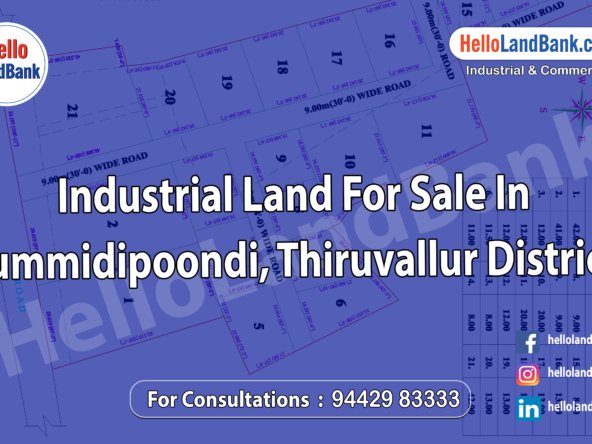Determining the best use for industrial land involves a comprehensive analysis of various factors, including market demand, zoning regulations, site characteristics, infrastructure availability, economic considerations, and environmental constraints. Here’s a step-by-step approach to determine the best use for industrial land:
1. Market Analysis:
- Conduct a market analysis to assess current and future demand for industrial properties in the local area or region. Evaluate market trends, industry dynamics, supply and demand factors, vacancy rates, absorption rates, rental rates, and emerging opportunities or challenges affecting industrial real estate markets.
2. Zoning and Land Use Regulations:
- Review zoning ordinances, land use regulations, and planning documents governing the industrial land to understand permitted uses, zoning classifications, development standards, and restrictions applicable to the property. Determine whether the intended use complies with zoning requirements and any special regulations or overlays affecting industrial development.
3. Site Assessment:
- Conduct a site assessment to evaluate the physical characteristics, environmental conditions, topography, soil conditions, access, utilities, and infrastructure available on the industrial land. Identify site constraints, opportunities, and suitability factors that may influence the choice of industrial use or development potential.
4. Highest and Best Use Analysis:
- Perform a highest and best use analysis to determine the most financially feasible and economically viable use of the industrial land that maximizes its value and potential returns. Consider alternative land uses, development scenarios, and investment strategies to assess the optimal use of the property given market conditions, site attributes, and investment objectives.
5. Feasibility Studies:
- Conduct feasibility studies or financial analyses to evaluate the economic feasibility, profitability, and risk factors associated with different industrial land uses or development options. Assess project costs, revenue projections, return on investment (ROI), cash flow projections, financing options, and sensitivity analysis to identify the most viable and sustainable use of the property.
6. Environmental Considerations:
- Evaluate environmental factors, regulatory requirements, and sustainability considerations relevant to the proposed industrial use. Assess potential environmental risks, contamination issues, remediation costs, permitting requirements, and compliance obligations associated with industrial operations to ensure responsible land use and environmental stewardship.
7. Infrastructure and Utilities:
- Consider the availability and adequacy of infrastructure, utilities, and transportation access necessary to support industrial operations or development on the land. Evaluate the proximity to transportation networks, utility connections, road access, rail lines, ports, airports, and other critical infrastructure elements that impact the feasibility and functionality of the industrial use.
8. Stakeholder Engagement:
- Engage with stakeholders, community members, local officials, industry experts, and relevant stakeholders to gather input, address concerns, and build consensus around the proposed use of industrial land. Consider stakeholder perspectives, community needs, public interests, and social impacts in the decision-making process to ensure alignment with broader goals and objectives.
9. Risk Management and Mitigation:
- Identify and assess potential risks, challenges, and uncertainties associated with the proposed industrial use or development of the land. Develop risk management strategies, mitigation measures, contingency plans, and compliance protocols to address regulatory, financial, operational, environmental, and legal risks affecting the chosen land use.
10. Flexibility and Adaptability:
- Maintain flexibility and adaptability in land use planning and development to accommodate changing market conditions, evolving industry trends, and future growth opportunities. Design industrial projects with scalability, modularity, and flexibility to adapt to emerging technologies, business needs, and market dynamics over time.
By integrating these considerations into the decision-making process, stakeholders can determine the best use for industrial land that aligns with market demand, regulatory requirements, site suitability, economic viability, environmental sustainability, and stakeholder interests. Collaboration among developers, investors, planners, regulators, and communities is essential to identify and realize the optimal use of industrial land that creates value, fosters economic development, and enhances the built environment.




